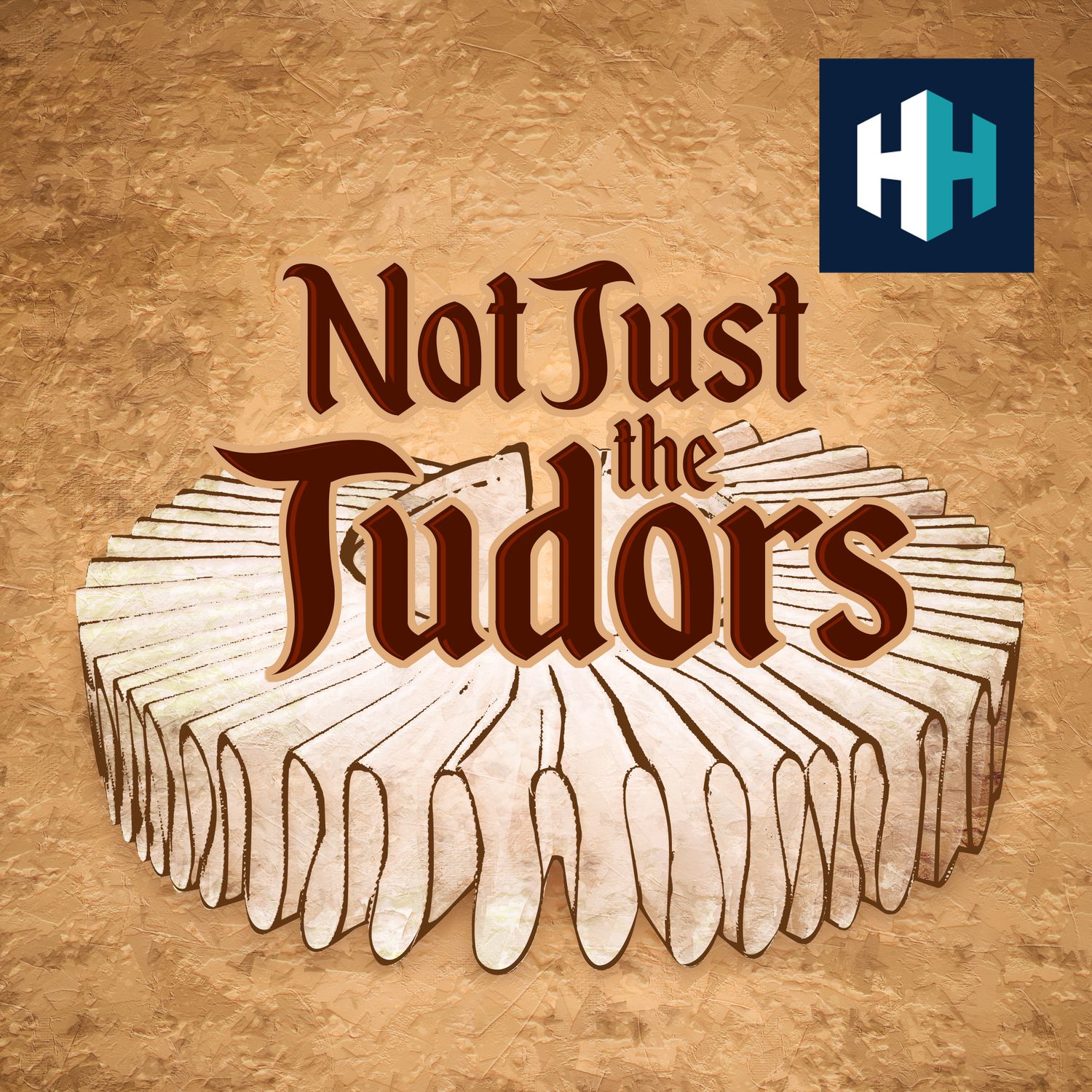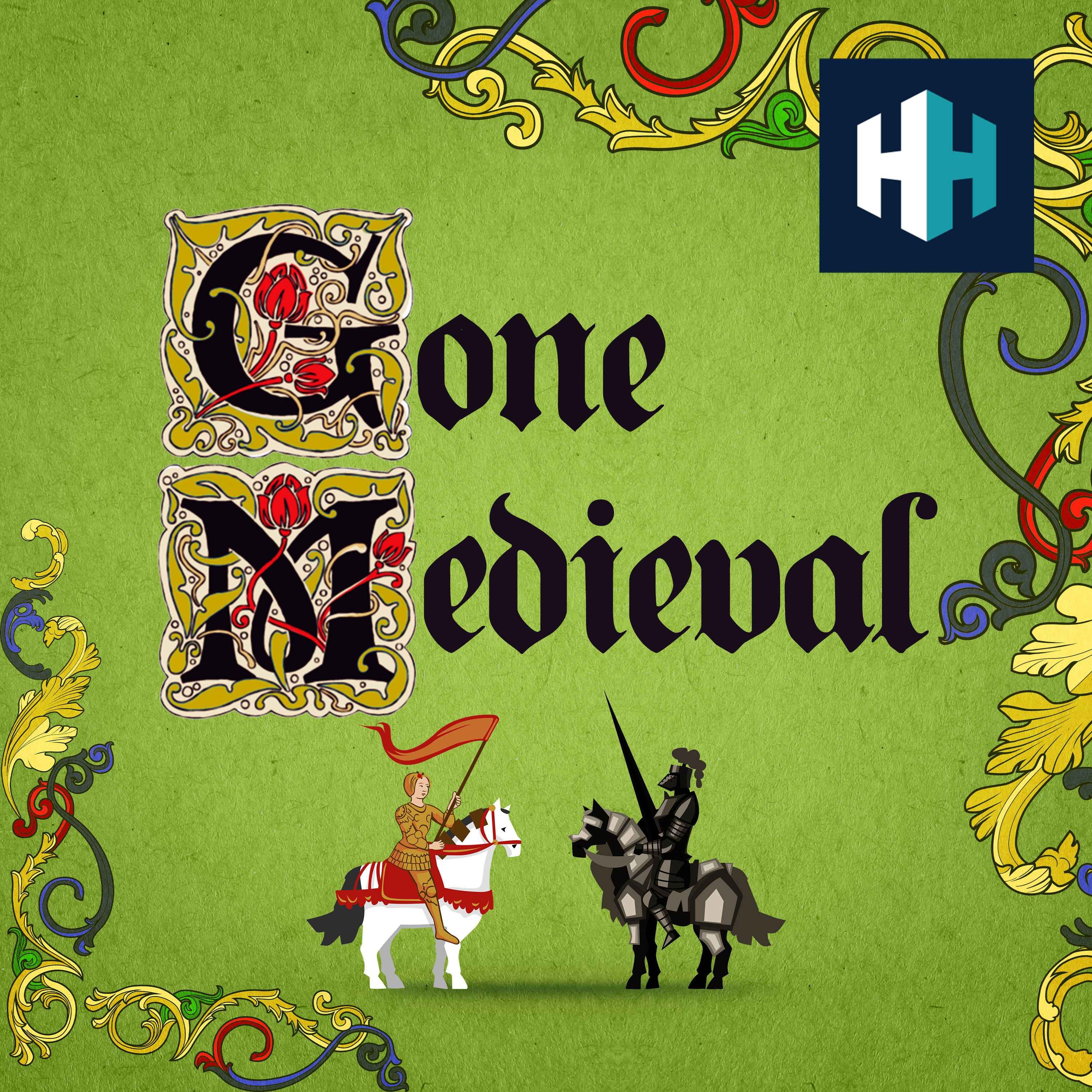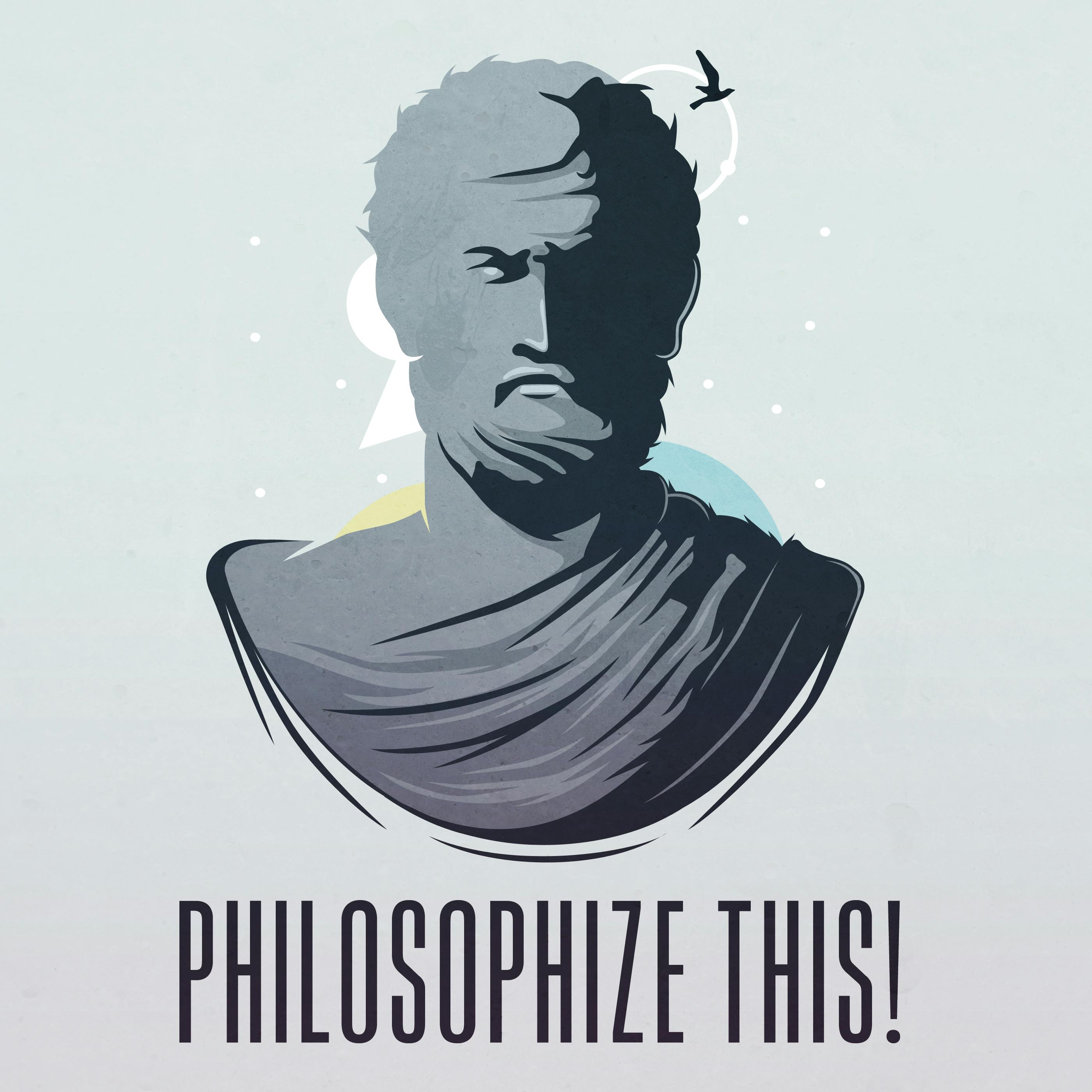
The Classic English Literature Podcast
Where rhyme gets its reason! In a historical survey of English literature, I take a personal and philosophical approach to the major texts of the tradition in order to not only situate the poems, prose, and plays in their own contexts, but also to show their relevance to our own. This show is for the general listener: as a teacher of high school literature and philosophy, I am less than a scholar but more than a buff. I hope to edify and entertain!
The Classic English Literature Podcast
The First Ghost Story? Daniel Defoe's "The Apparition of Mrs. Veal"
For you today, Trick or Treaters, a discussion of what some critics assert is the first modern ghost story in English: Daniel Defoe's 1705 "The Apparition of Mrs. Veal."
The text: https://www.gutenberg.org/files/36587/36587-h/36587-h.htm
Please like, subscribe, and rate the podcast on Apple, Spotify, YouTube Music, or wherever you listen. Thank you!
Email: classicenglishliterature@gmail.com
Follow me on Instagram, Facebook, and YouTube.
If you enjoy the show, please consider supporting it with a small donation. Click the "Support the Show" button. So grateful!
Podcast Theme Music: "Rejoice" by G.F. Handel, perf. The Advent Chamber Orchestra
Subcast Theme Music: "Sons of the Brave" by Thomas Bidgood, perf. The Band of the Irish Guards
Sound effects and incidental music: Freesounds.org
My thanks and appreciation to all the generous providers!
Good evening, bookworms and litterbugs, here’s a little fun-size episode for Halloween, a sweet and sticky edition Classic English Literature Subcast, where we wander through forgotten catacombs to resurrect lost tales.
Today’s chinwag is about what many believe to be the first modern ghost story. Ah, there’s nothing like a good ghost story, and this is nothing like a good ghost story. In fact, that category – ghost story – is a little problematic where this tale is concerned. Nonetheless, even though the quest to identify the first anything is usually spurious, I think we should at least take note when many readers and critics put forward the same candidate.
Our writer today is Daniel Defoe, whom you probably know as the author of Robinson Crusoe – incidentally, a candidate for the first modern novel – which we’ll cover next time on the main podcast. And the story – maybe the first ghost story – is called (now get ready): “A True Relation of the Apparition of one Mrs. Veal, the Next Day after her Death, to one Mrs. Bargrave, at Canterbury, the Eight of September, 1705, which Apparition recommends the Perusal of Drelincourt’s Book of Consolations against the Fears of Death.”
Phew. A 42 word title. A dogleg of a dogleg. But I give it to you in all its desultory glory because, well . . . stick around and all will be made clear, friend listener.
Speaking of friend listeners, this seems an admirable time to acknowledge my gratitude to a most stalwart friend and supporter of the poddie, that being the generous Helen B. of Cornwall, who has once again provided the readies. Thank you ever so, Ms. B. It’s so good to know you’re out there.
And I would like to say thank you to another listener who has helped with the bills but, unfortunately, I don’t know your name. I only received a notice of a bank transfer. To my secret admirer, thank you, thank you. There was also a lovely email from Lauriane in Provence, who snacks on olives while listening – says she’s using the poddie to prepare for her upcoming English literature exam. I wish you godspeed and I hope I have guided you to the paths of academic glory! And finally, I received a fan mail text from Providence, RI – my old stomping grounds – saying that they really enjoyed the episode on John Skelton. Thank you so much! Very good to hear!
If you’d like to get in touch with me, you can click that fan mail link on the episode page – think it says “Send us a text.” Alternatively, you can use the old-fashioned email link or the new-fashioned anti-social media pages. I’d love to hear your questions and especially, your effusive praise, for I am fragile and needy. There’s also the “Support the Show” button if you value this podcast and would like to help keep the creditors at bay. Thanks for all the support you give.
pause
When “The Apparition of Mrs. Veal” etc., etc., appeared in 1705, England was in the middle of an information explosion. In 1666, the first true newspaper in England, the London nee Oxford Gazette was founded. In 1680, William Dockwra introduced the London Penny Post, the first system for local delivery within London for a uniform low price. Cheaply printed pamphlets and broadsides meant that in a country of rising literacy rates, the public had access to more information and opinion than at any time in its history. Less formally, London’s coffeehouses had become buzzing centers of gossip, politics, and debate.
Daniel Defoe (born 1660) was right in the thick of this revolution. Before he was a novelist, he was a pamphleteer and political propagandist — an 18th century content creator. Pamphlets at the time functioned a bit like today’s blog posts or viral think-pieces — fast, polemical hot takes, meant to herd the sheeple. Readers thus became used to a new kind of prose: plain, factual, eyewitness, and credible-sounding. Defoe wrote hundreds of pamphlets under pseudonyms, tackling everything from trade policy to religion to crime. He even founded one of Britain’s first true periodicals, The Review (1704–1713), a precursor to The Spectator and modern newspapers, which we shall be sure to cover here in the fullness of time.
That journalistic tone is exactly what Defoe brings to “The Apparition of Mrs. Veal.” The story is presented not as fiction, but as a true account — with names, dates, and details that mimic the sober style of reportage.
But before we start mapping the boundaries of fact and fiction, perhaps those of you who have not yet read “Mrs. Veal” would like a quick and dirty summary. Permit me to oblige.
It opens like a court document, a submission of evidence, not a ghost tale. Its very first line is a blunt assertion: “This relation is a Matter of Fact” – and I should note, since this show is an audial medium, that in the higgledy-piddledy punctuation conventions of the time, the words “matter” and “fact” are both capitalized for emphasis. The narrator – an unnamed “editor” – reports the strange circumstances of a woman’s death and the supernatural visit that followed it.
The circumstances are these:
At noon on September 8th, 1705, a thoroughly respectable and very, very creditable woman who is entirely trustworthy and who can be wholly relied upon named Mrs. Bargrave receives an unexpected visit from her dear friend Mrs. Veal, whom she hasn’t seen in years. Mrs. Veal enters Bargrave’s house cheerfully, dressed in a “scoured” silk gown (they make rather a big deal of that), and, though they never touch, the two women sit together for one hour and 45 minutes, chatting intimately about friendship, forgiveness, and—most strikingly—the afterlife.
Mrs. Veal speaks with unusual calm about death, saying that people should not fear it if they live good lives: “be comforted under your afflictions and believe that the Almighty has a particular regard to you.” She urges Mrs. Bargrave to read Charles Drelincourt’s The Christian's Defence against the Fears of Death — a devotional text about preparing the soul for heaven — as well as other self-help guides for facing the big sleep. Mrs. Bargrave steps out to summon her absent daughter and, when she returns, she finds that Mrs. Veal is standing on the pavement, ready to walk away.
A short time later, Mrs. Bargrave learns that Mrs. Veal had actually died the day before — in another town, miles away.
The news of this visit shocks everyone, but Mrs. Bargrave insists that her visitor was real: she recalls her dress, her voice, her gestures, every detail. One Mrs. Watson is quite convinced when the silk style is mentioned, saying, “You have seen her indeed, for none knew, but Mrs. Veal and myself, that the gown was scoured!” So you can, you know, take that to the bank. Others corroborate her story, claiming to have seen Mrs. Veal enter or leave the house. The narrator—that sober investigator/editor—gathers testimony and vouches for the story’s truth, insisting that this “apparition” must have been her immortal soul come to make peace before entering eternity. In addition to questioning Mrs. Bargrave several times as to the fabric of the gown, he notes that “Mrs. Bargrave never varies her story” and that she has never accepted any money for the repeating of it, “and therefore can have no interest in telling the story.”
The editor draws his conclusions with pious certainty. The apparition, it suggests, was sent by Providence to remind the living that death is not the end—and that the soul survives the grave: “Her two great Errands were to comfort Mrs. Bargrave in her Affliction, and to ask her Forgiveness for her Breach of Friendship, and with a Pious Discourse to encourage her.” He concludes almost admonishingly:
This thing has very much affected me, and I am as well satisfied, as I am of the best grounded Matter of Fact. And why should we dispute Matter of Fact, because we cannot solve things, of which we can have no certain or demonstrative Notions, seems strange to me: Mrs. Bargraves's Authority and Sincerity alone, would have been undoubted in any other Case.
pause
At this point, I feel I should make explicit my reasons for two points: 1) why I said that this was nothing like a good ghost story, and 2) why I gave the full title of the story. In some ways, these reasons overlap.
We think of a ghost story as a relatively short prose tale, featuring a ghost obviously, designed to elicit in the reader a sense of suspense, dread, and fear. Defoe hits marks one and two – the story’s short and there is a ghost (though listeners should imagine an asterisk by the word “ghost.” I’ll explain momentarily). Arousing fear and suspense: 0 out of 10, Dan.
See, all the suspense gets stripped out before you even begin the story. That meandering title tells you that “the apparition of one Mrs. Veal” appears to Honest Bargrave “the next day after her death.” Well, that certainly avoids any pesky plot twists. There’s no surprise, no building dread and suspicion. You take up the pamphlet and know that you’re going to read about a truthful middle-aged lady having tea with the ghost of an old friend. And unless you’ve had tea and cream cakes with a couple of elderly women with dodgy dentures, the prospect is not at all terrifying.
But, lest you think I’m being too harsh on good Mr. Defoe, let me stress that it was not his idea to call this a ghost story in our sense of the term. It would be most unfair to judge him by standards set in place after his death. Indeed, as I hinted above, our calling Mrs. Veal a ghost at all may be anachronistic.
See, because we think of a ghost (usually) as some ectoplasmic emanation of a deceased person, or we think of it as a disembodied soul. And, we frequently use the term “apparition” as a synonym for ghost. Defoe and his contemporaries did not – or, at least, there were times when they drew a distinction. In Irish folklore, there is the figure of the “fetch” – the spectral doppelganger of a living human, whose appearance is regarded as ominous. That sort of fits here, except we know Mrs. Veal is already dead, so I'm not going to try to make fetch happen. Rather, an apparition, especially to the Protestant mind, was a spirit that may, as Defoe puts it elsewhere, “assume a real Case of Flesh and Blood.” So, a physical human, but not a “person,” if you take my meaning. Not necessarily supernatural at all. The border between the natural and the supernatural was a contested one – as, indeed, it still is in many cases. There was an attempt to rationalize – to make natural – what had heretofore been superstition or supernatural.
You see, when “The Apparition of Mrs. Veal” was published in 1705, the Western mind experienced a crisis of faith — not the collapse of belief, but a deep tension between religion and reason.
The Scientific Revolution had changed how people thought about nature and the universe. Newton had shown that the heavens moved according to mathematical laws, and philosophers like Hobbes advocated a materialist view of existence. In this new “Age of Reason,” ghosts, miracles, and visions were increasingly seen as the remnants of a credulous, pre-scientific age.
But at the same time, belief in the immortality of the soul remained central to Christian doctrine. So, how could one prove that the soul existed, if one no longer trusted stories, legends, or church authority?
Well, we get the subgenre of “the apparition narrative,” of which “The Apparition of Mrs. Veal” is the most prominent example. It may look to us like a ghost story, and a fairly lame one, at that, but it’s really a theological argument disguised as journalism. The text insists on the story’s factuality, giving witnesses, times, and places in obsessive detail. The narrator repeatedly swears that “this is a true account,” as if he were presenting evidence in court. So, in this tale, Defoe presents a spiritual proof for a skeptical age. The editor makes the almost propagandistic assertion in his opening:
The use which we ought to make of it, is to consider, that there is a life to come after this, and a just God, who will retribute to every one according to the deeds done in the body; and therefore to reflect upon our past course of life we have led in the world; that our time is short and uncertain; and that if we would escape the punishment of the ungodly, and receive the reward of the righteous, which is the laying hold of eternal life, we ought, for the time to come, to return to God by a speedy repentance, ceasing to do evil, and learning to do well: to seek after God early, if happily he may be found of us, and lead such lives for the future, as may be well pleasing in his sight.
So, “Mrs. Veal” serves more as a didactic tract than entertainment, akin to a sermon or moral essay.
pause
Of course, there may be more pecuniary motives at work. When you read “Mrs. Veal,” you are struck by its insistence on veracity, and that insistence is very much bound up in the text’s status as text. As printed text. Actually, it seems quite probable that this story is not original to Defoe. The authorship has been disputed, but regardless, the bones of the story almost certainly circulated as an oral tale. This “relation” as it is “here worded” can “be attested” – and these all rely upon its fixed status as printed text. And, of course, the story itself seems obsessed with the authority of texts. Several well-known books, as I mentioned above, are endorsed here: Drelincourt’s The Christian’s Defence, Anthony Horneck’s The Happy Ascetick, John Norris’ “Friendship in Perfection.” In fact, that first – the Drelincourt – is explicitly promoted in the story’s title: “Which Apparition recommends the perusal of Drelincourt’s book.” A celebrity endorsement from beyond the grave.
Now, here’s the kicker, friend listener. There has long been speculation that Defoe’s perhaps apocryphal authorship was prompted less by a concern for the Christian soul in a rapidly secularizing age and more about boosting the sales of a flagging devotional book. Scholar Maximilian Novak writes: “The traditional story of Defoe’s involvement has him listening to a complaint about the slow sale of Drelincourt’s work, inquiring if there was enough of the supernatural in it, and offering to write such an attractive piece.” We can never know, of course, but the rumor does originate with one of Defoe’s earliest biographers, and it does explain that rather “4 out 5 dying souls prefer Drelincourt for fast relief” vibe in the title. Sales did increase, by the way. And I think that Sir Walter Scott, he of Ivanhoe fame, believed this bit of gossip.
But, you know, two things can be true. Or three. If a guy scratches out a weird little tale that maybe invents the ghost story, makes some people feel better about shuffling off their mortal coils, and relieves the overstock in whatever the 1705 equivalent of Barnes and Noble was, well, bully!
Happy Halloween, everybody! Thanks for listening. Talk to you soon.
Podcasts we love
Check out these other fine podcasts recommended by us, not an algorithm.

The History of England
David Crowther
The History of English Podcast
Kevin StroudShakespeare Unlimited
Folger Shakespeare Library
Lexicon Valley
Lexicon Valley
Not Just the Tudors
History Hit
Gone Medieval
History Hit
Philosophize This!
Stephen West
The Rest Is History
Goalhanger
A History of Rock Music in 500 Songs
Andrew Hickey
The Partially Examined Life Philosophy Podcast
Mark Linsenmayer, Wes Alwan, Seth Paskin, Dylan Casey
Literature and History
Doug Metzger
